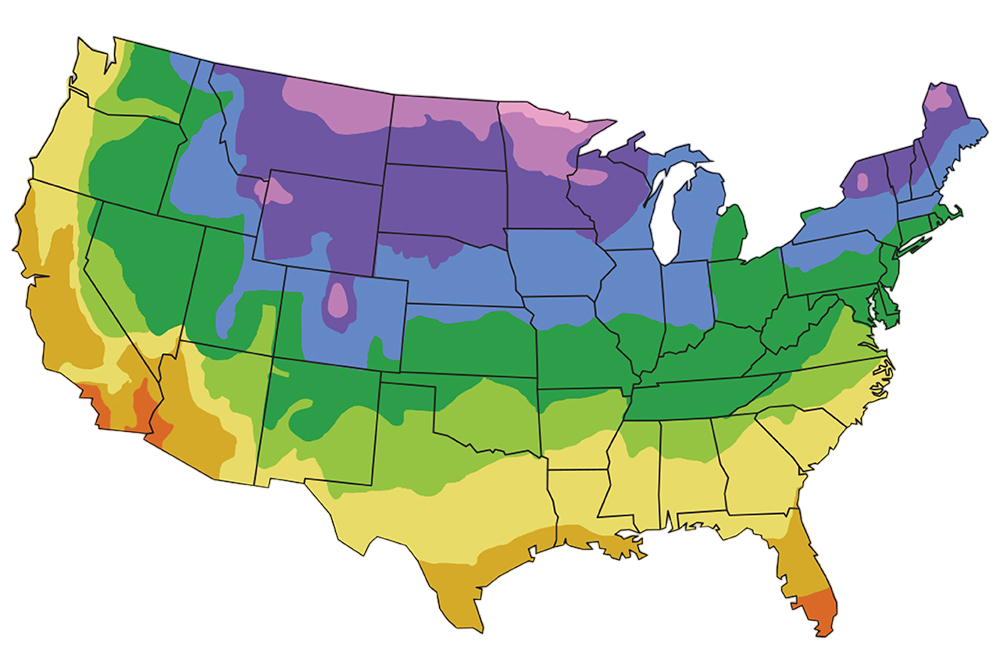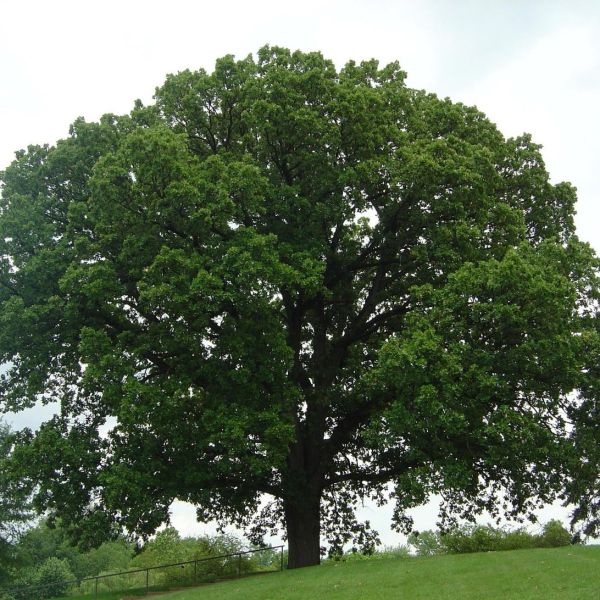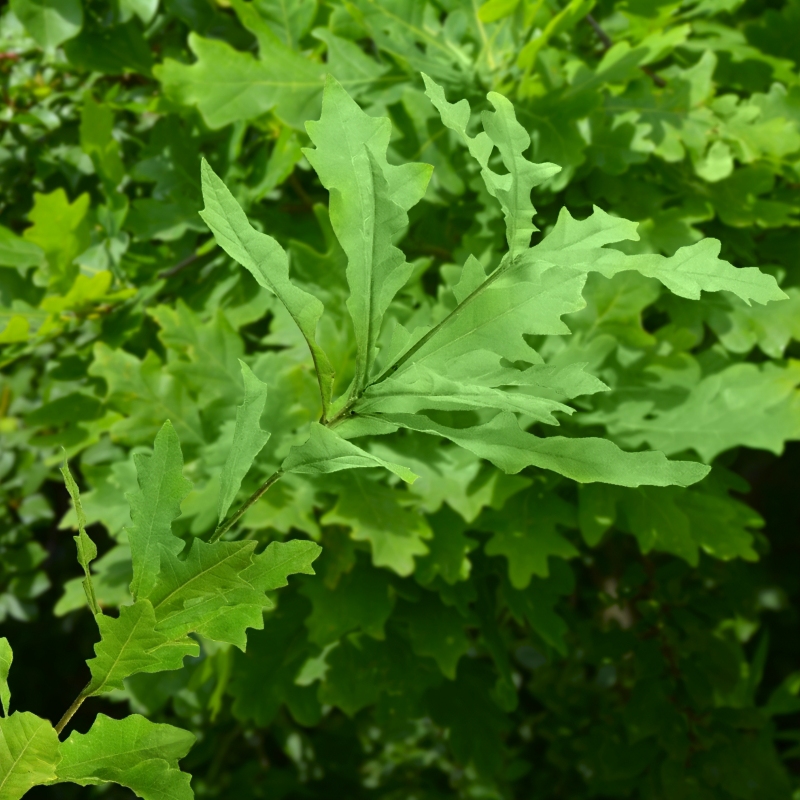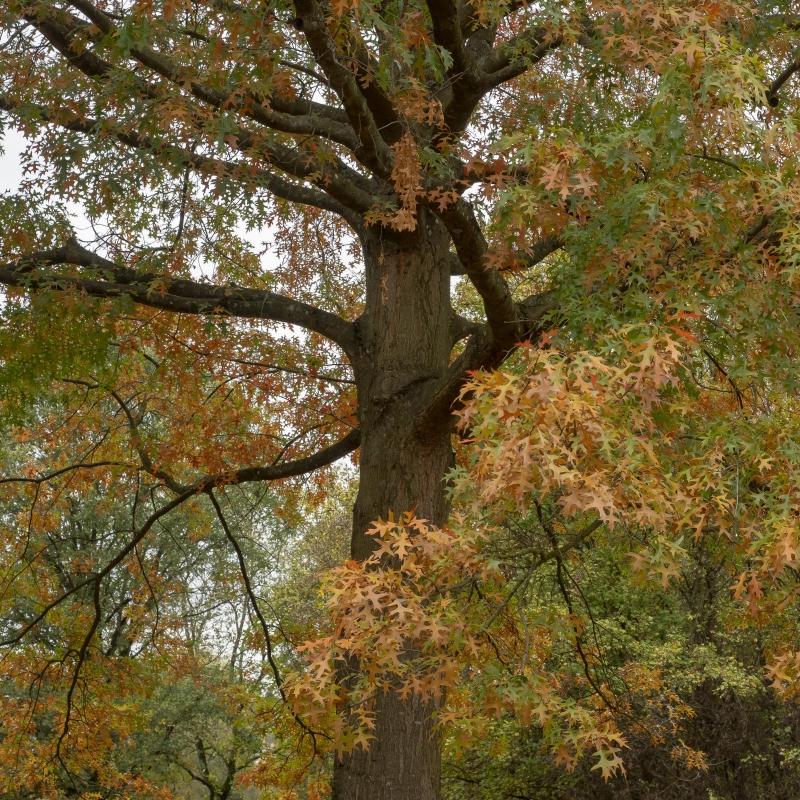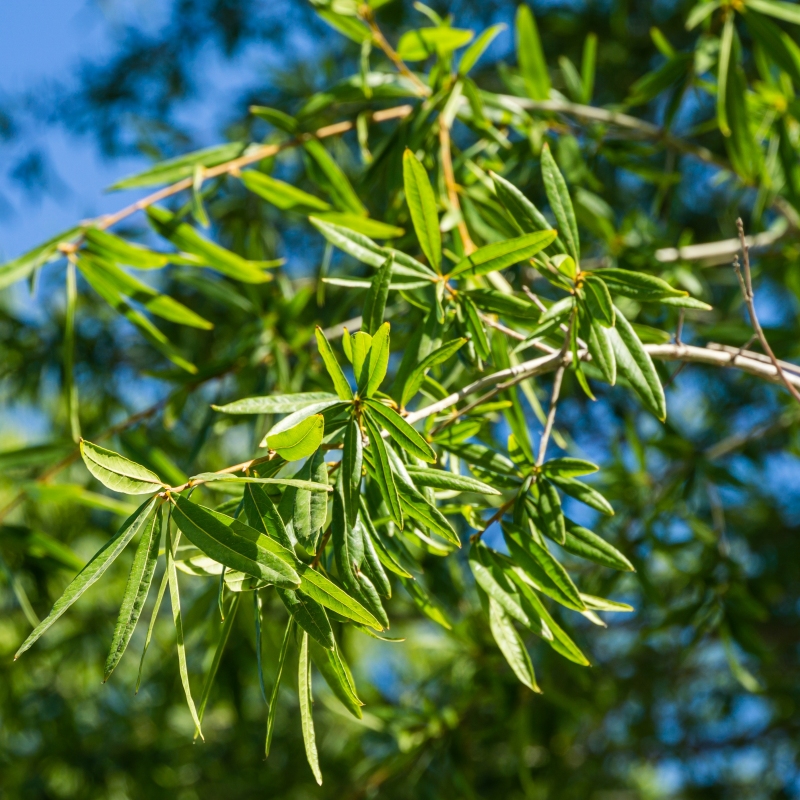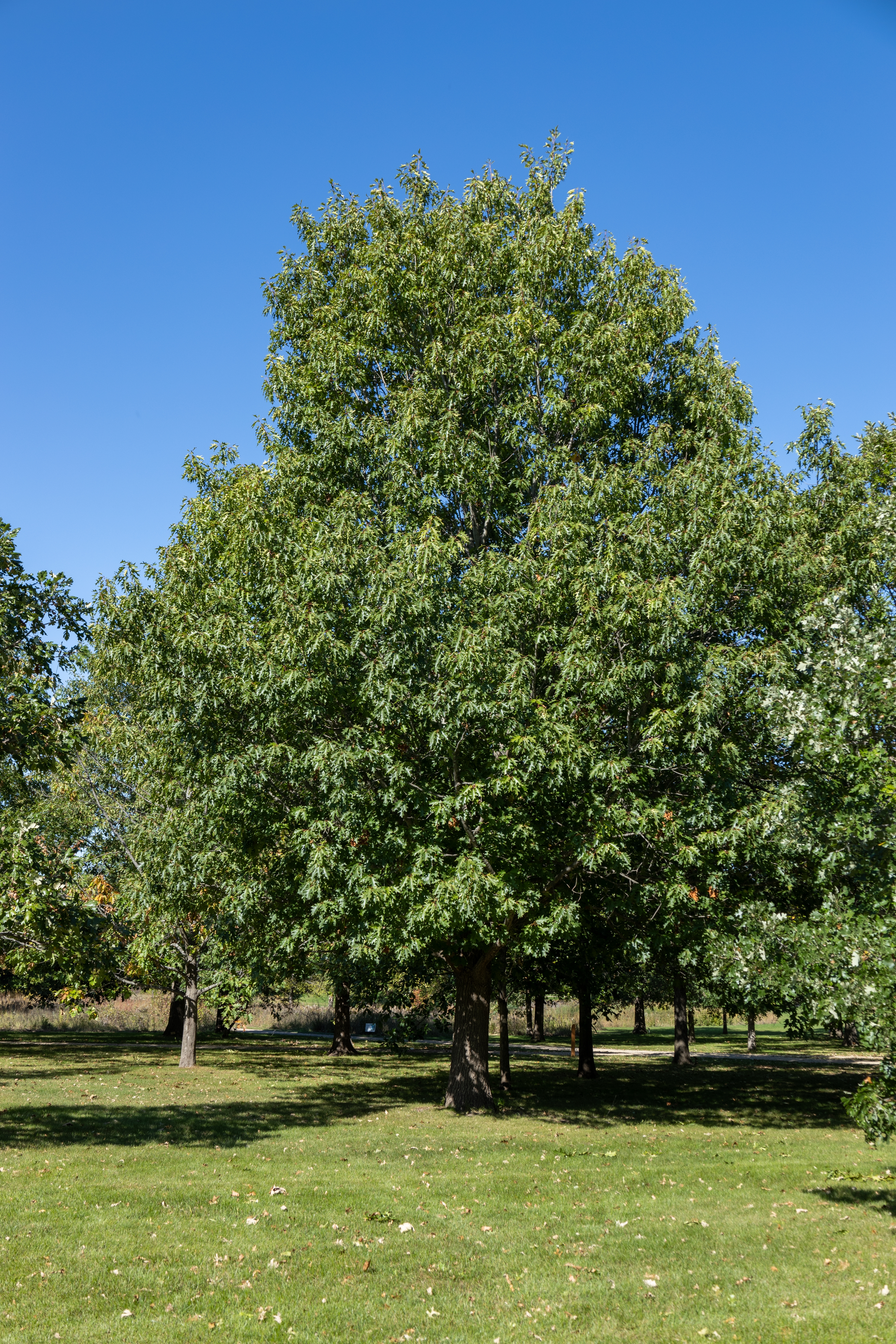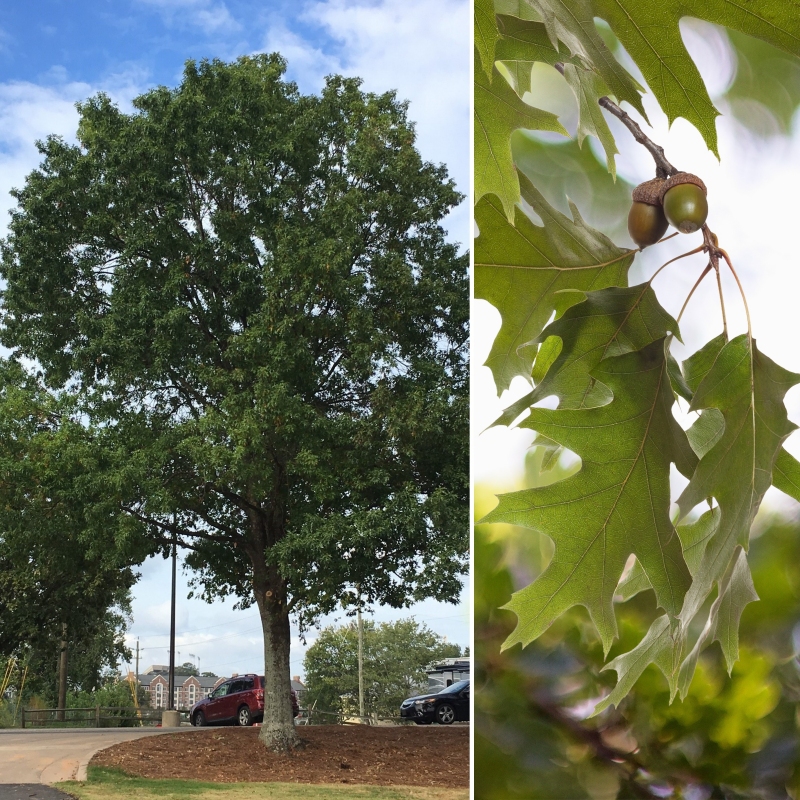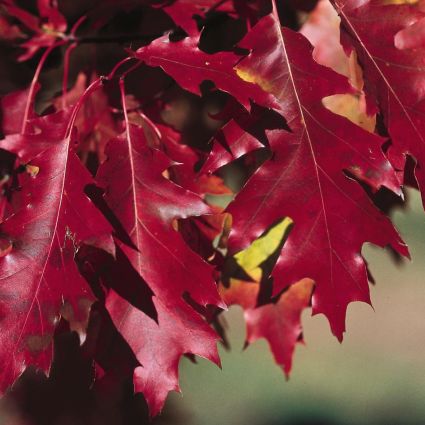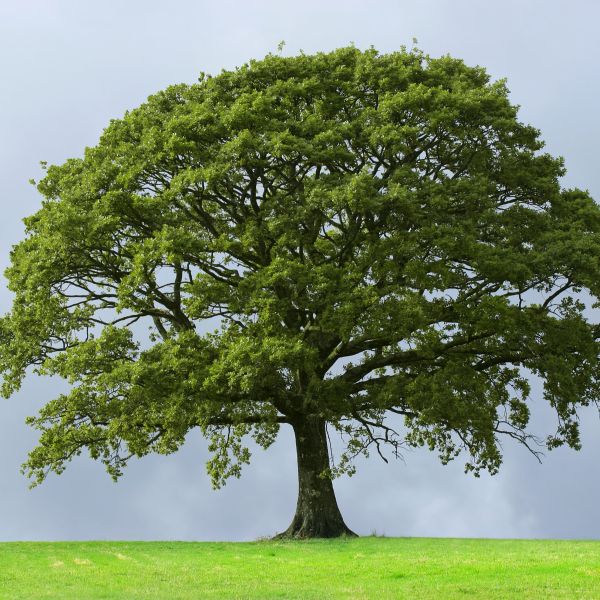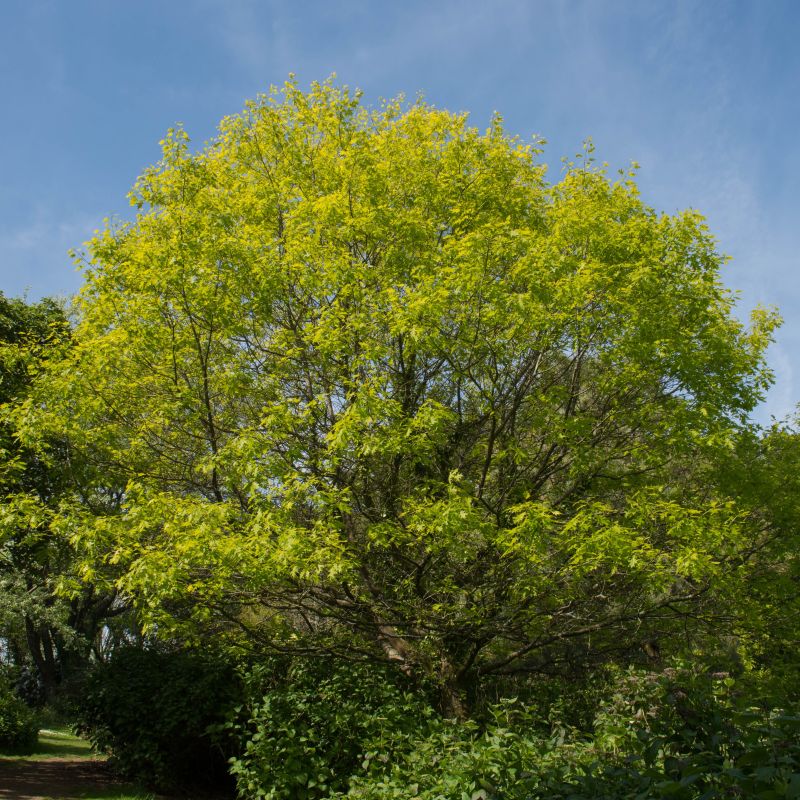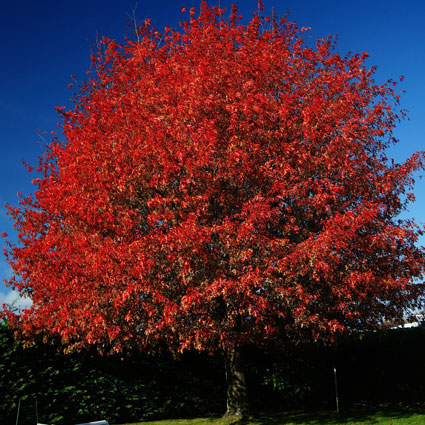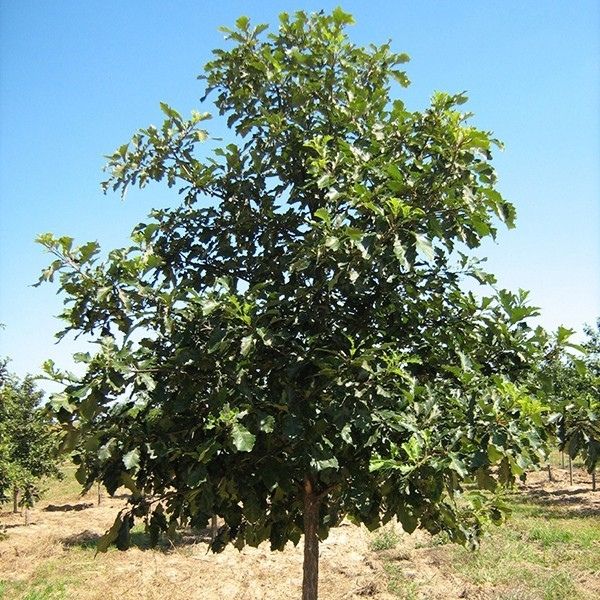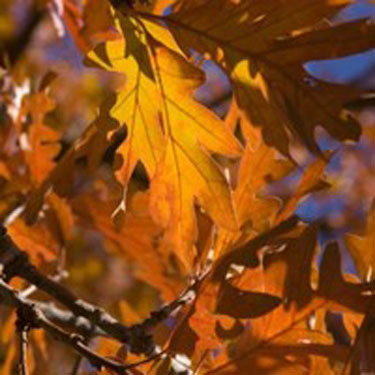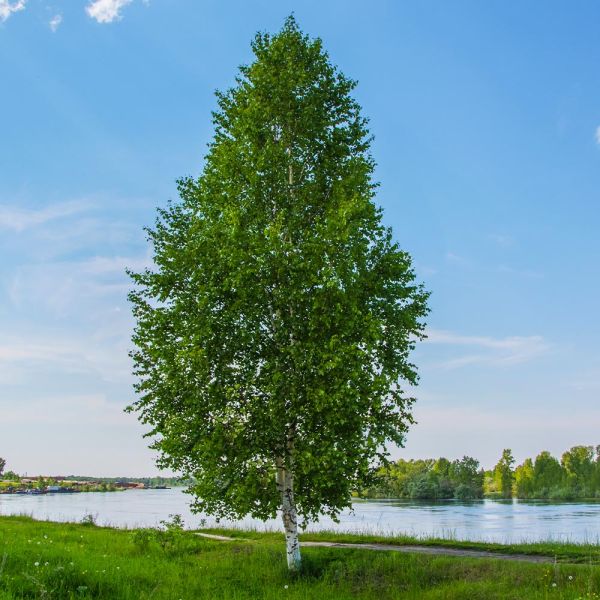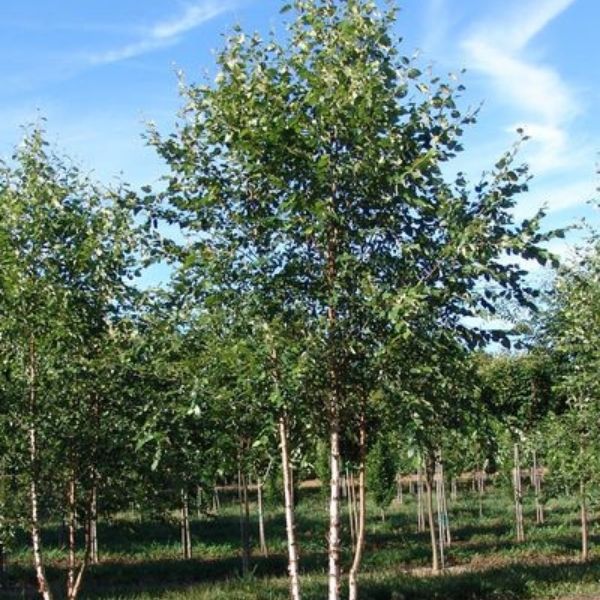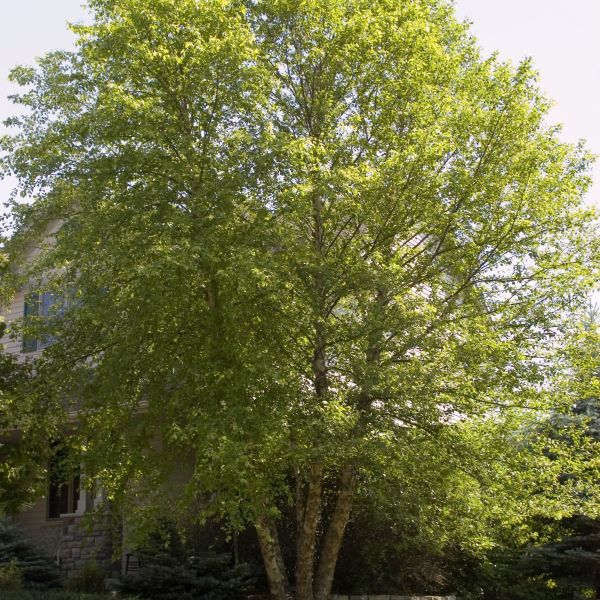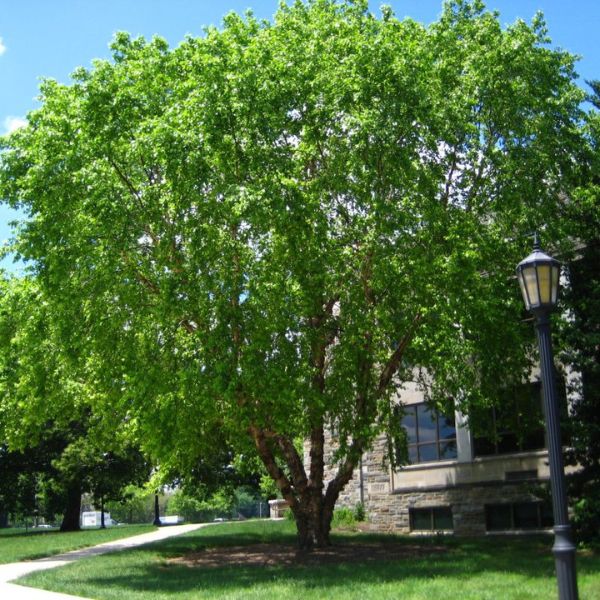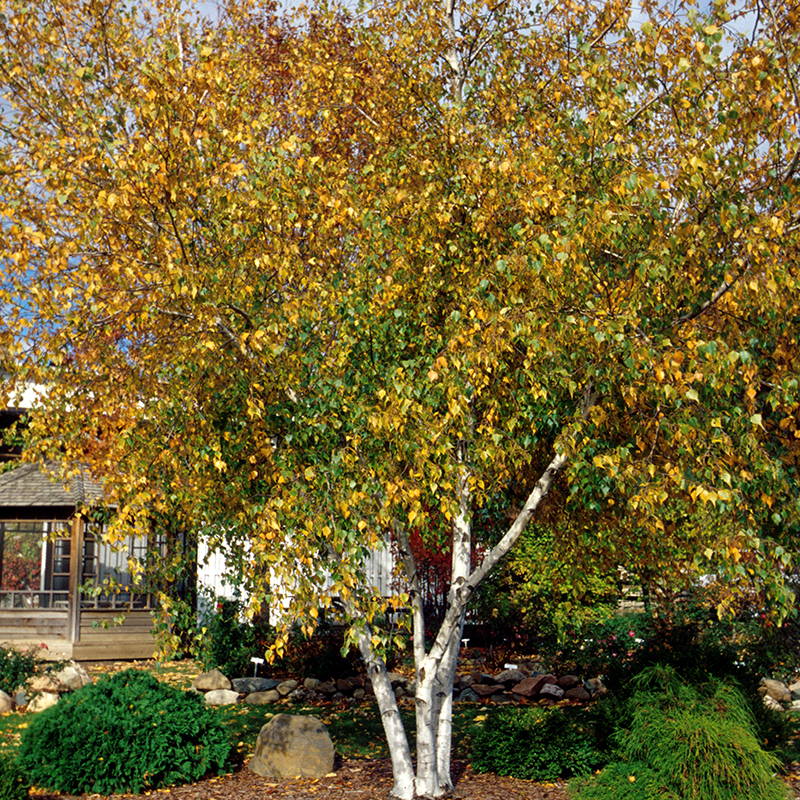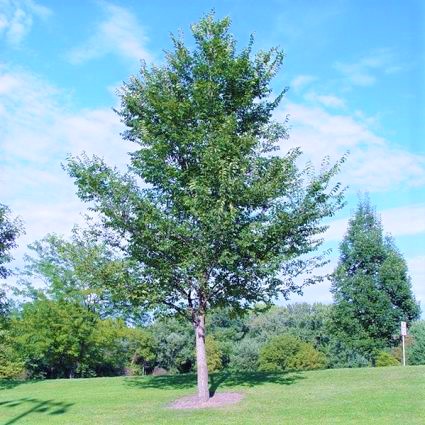
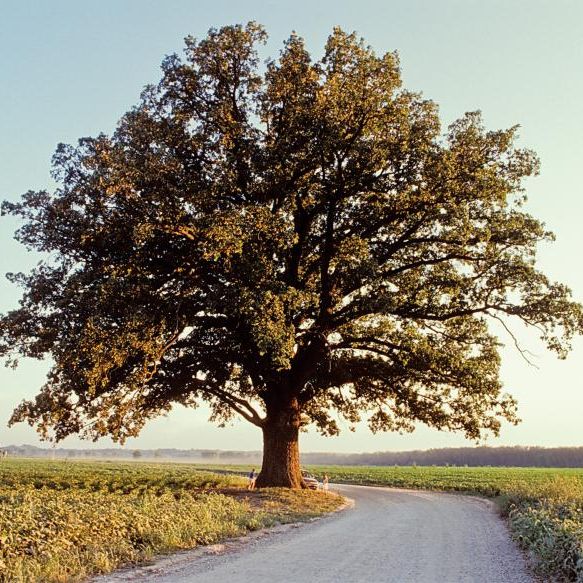




Bur Oak Tree
Quercus macrocarpa
8 reviews
Bur Oak Tree
Quercus macrocarpa
8 reviews
- Provides ample shade and shelter for wildlife
- Tolerant of a variety of soil conditions
- Beautiful fall foliage in shades of red, brown, and gold
- Recommended by landscape designers for optimal fit in real yards
$95.00
$136.00
30% Off
- Ships to 43215 in 3 to 7 days
- Free Shipping Over $150
- Plant Arrival Guarantee
- In Stock
- Free Plant Consult
$200 - Landscape-Approved: Every Plant We Sell Comes With Design Expertise Behind It
- 2.5 Gallon
- 1 Gallon
- Trade 3 Gallon
Not just beautiful - intentionally selected by ShrubHub's 3D landscape design team to fit real-world spaces and maximize yard potential.
Why Bur Oak Tree?
The Bur Oak Tree, also known as Quercus macrocarpa, is a large and majestic tree native to North America. With its distinctive corky bark, deeply lobed leaves, and massive size, it can reach heights of up to 100 feet tall. The Bur Oak is known for its ability to withstand harsh climates and poor soil conditions, making it a popular choice for landscaping and wildlife habitats.
People who loved this plant also bought
Sunlight
The Bur Oak tree thrives in full sun to partial shade, requiring at least 6 hours of sunlight per day to grow and develop properly. Adequate sunlight helps promote healthy growth and strong root development in this large and sturdy tree species.
Watering
Bur Oak Trees require regular watering during the first few years of growth to establish a strong root system. Once established, they are drought-tolerant and only need watering during extended periods of dry weather. It is important to water deeply to enc
Fertilizing
Bur Oak trees prefer well-drained soil with a pH level between 6-7. They do not have specific fertilizer requirements, but can benefit from a slow-release fertilizer high in nitrogen and potassium. It is important not to over-fertilize as this can harm the
Bur Oak Tree (Quercus macrocarpa)
The Bur Oak Tree, scientifically known as Quercus macrocarpa, is a large deciduous tree native to North America. It is commonly found in the central and eastern regions of the United States and parts of Canada. The Bur Oak is known for its rugged appearance, with a wide-spreading crown and deeply ridged bark.
Features:
- Leaves: The leaves of the Bur Oak are lobed with a deep sinuses, resembling an inverted bell shape. They turn a yellow-brown color in the fall.
- Acorns: The tree produces large acorns with a fringed cap, giving it the nickname "mossycup oak."
- Bark: The bark of the Bur Oak is gray and scaly, becoming deeply furrowed as the tree matures.
- Size: Bur Oak trees can grow up to 80 feet tall and have a spread of 70 feet, making them ideal for large landscapes.
- Hardiness: The Bur Oak is a hardy tree that is tolerant of many soil types and can withstand urban pollution.
Uses:
Due to its large size and rugged appearance, the Bur Oak is often used as a shade tree in parks, large gardens, and along streets. It provides shelter and nesting sites for wildlife, and its acorns are a valuable food source for animals.
Care:
The Bur Oak Tree is relatively low-maintenance once established. It prefers full sun and well-drained soil, but is adaptable to a variety of growing conditions. Regular watering and occasional pruning to remove dead or damaged branches will help keep the tree healthy and looking its best.
Plant Information:
| Botanical Name: | Quercus macrocarpa |
| USDA Zones: | 3 - 8 |
| Water: | Moderate to Low |
| Exposure: | Full Sun |
| Soil Needs: | Widely Adaptable |
| Mature Height: | 70 - 100 feet |
| Mature Spread: | 70 - 100 feet |
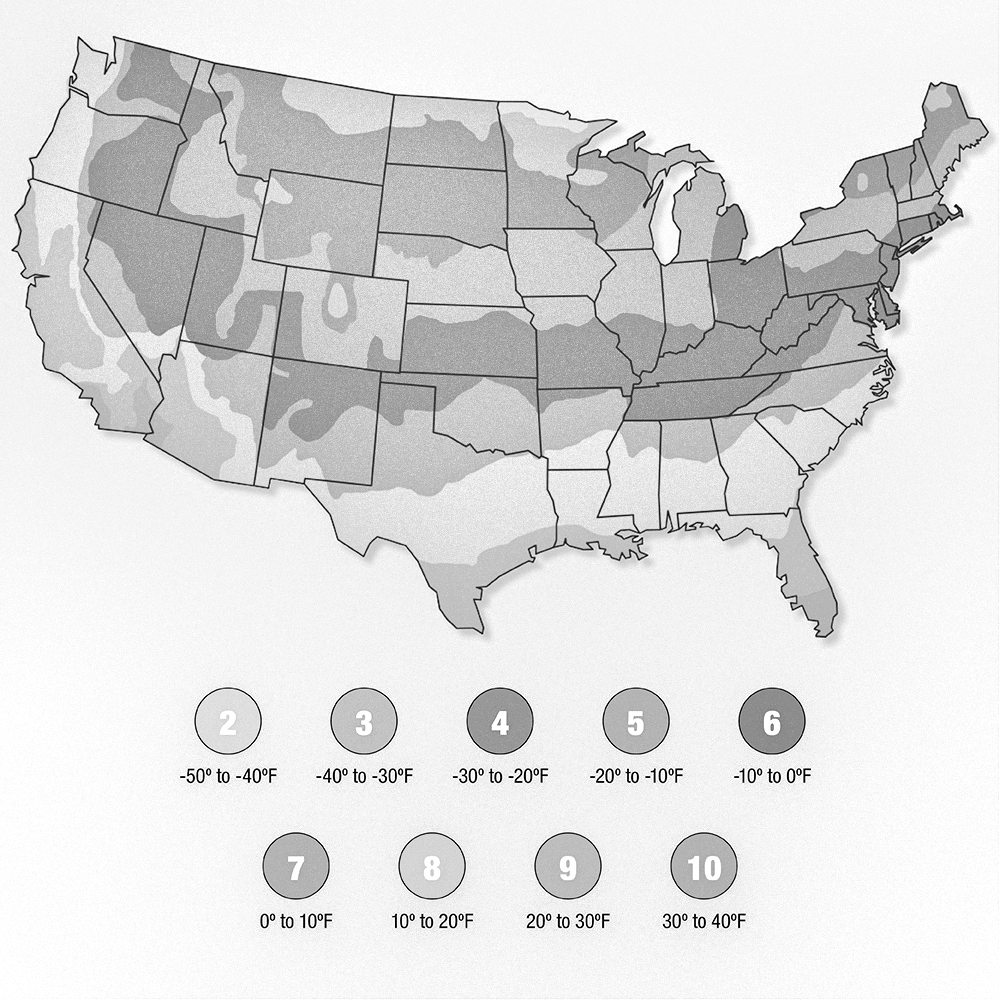


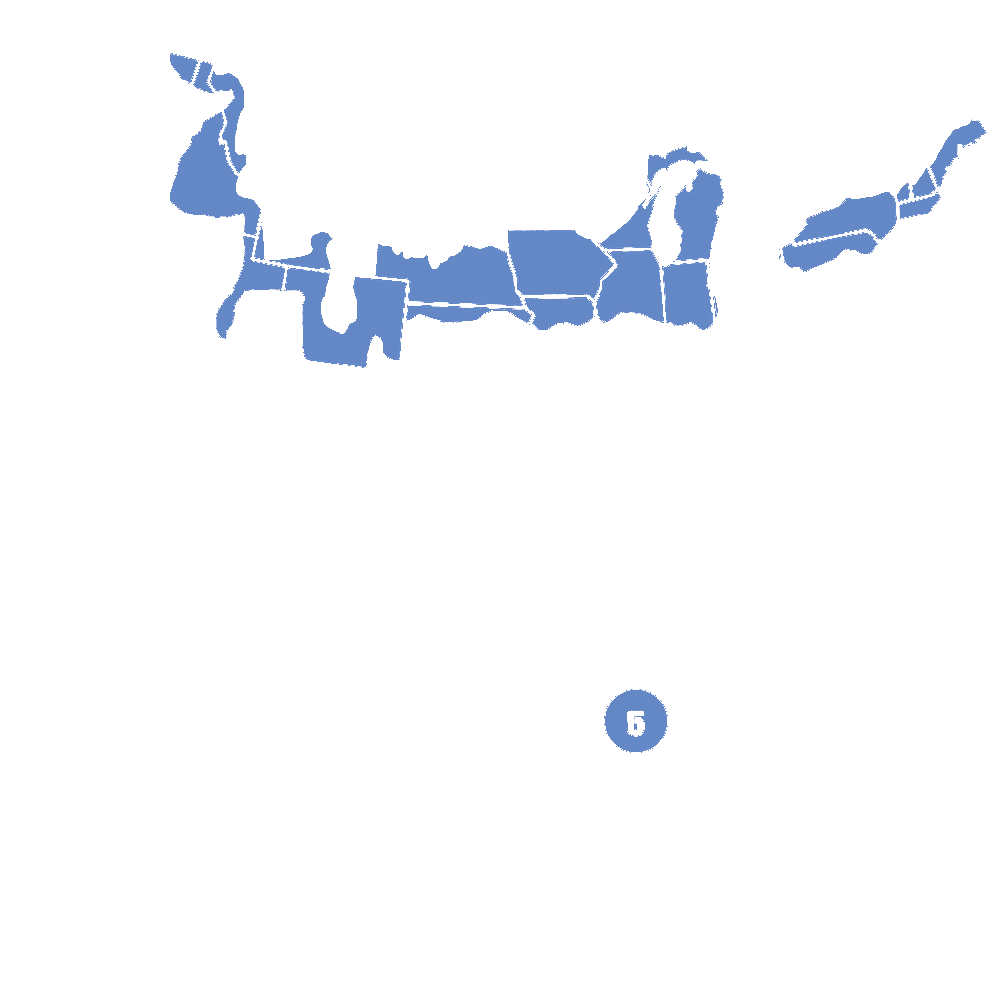
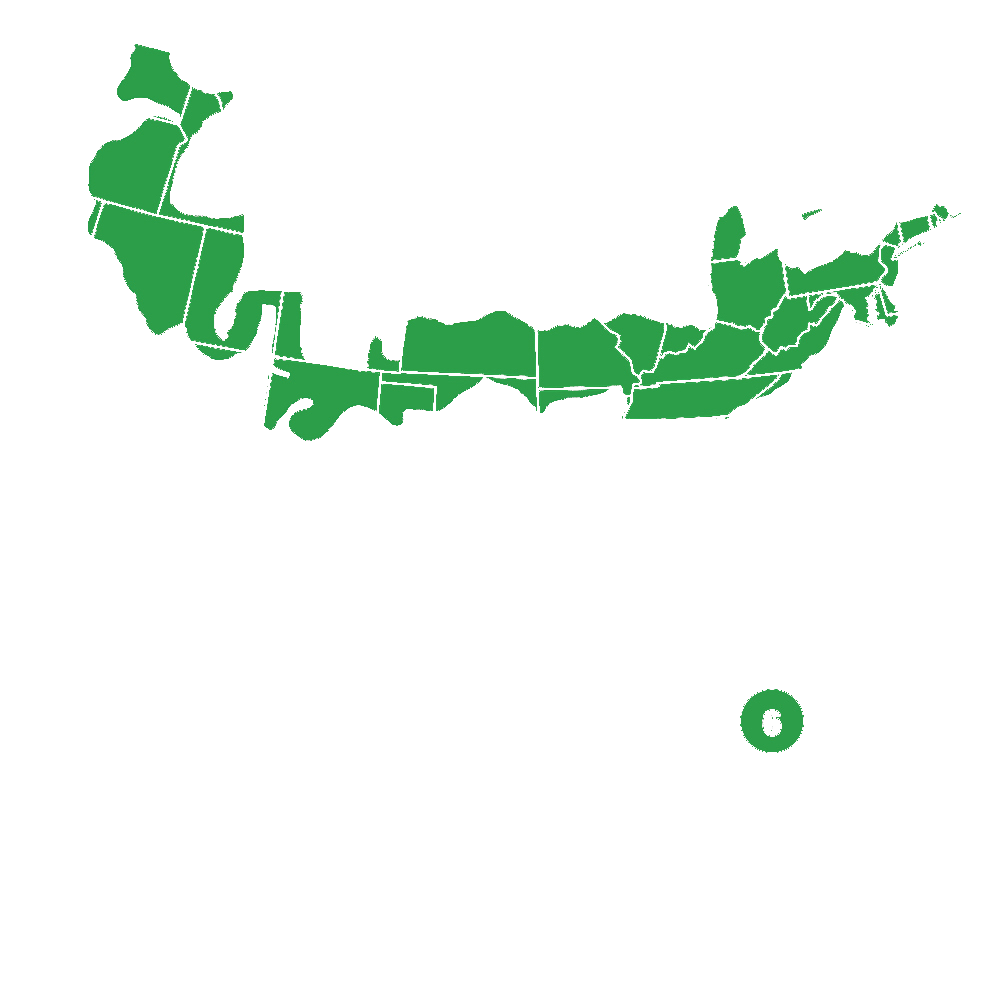
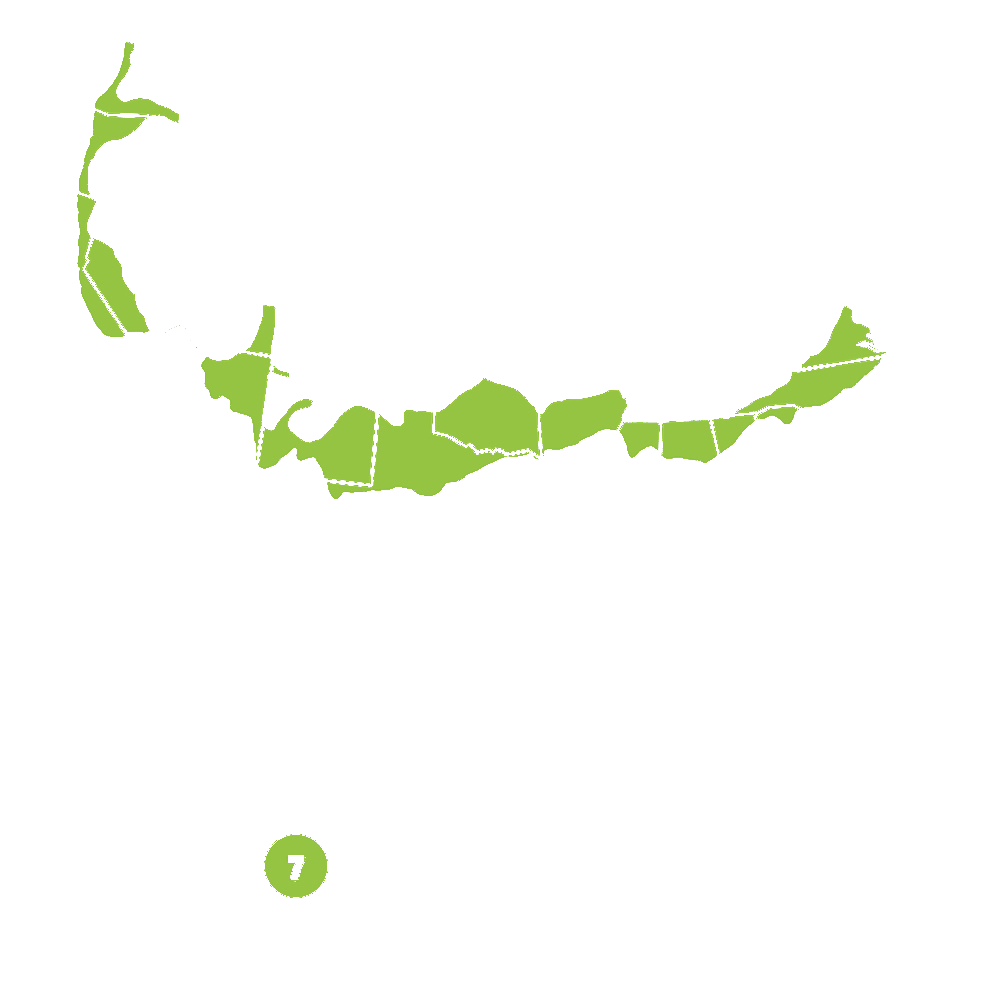
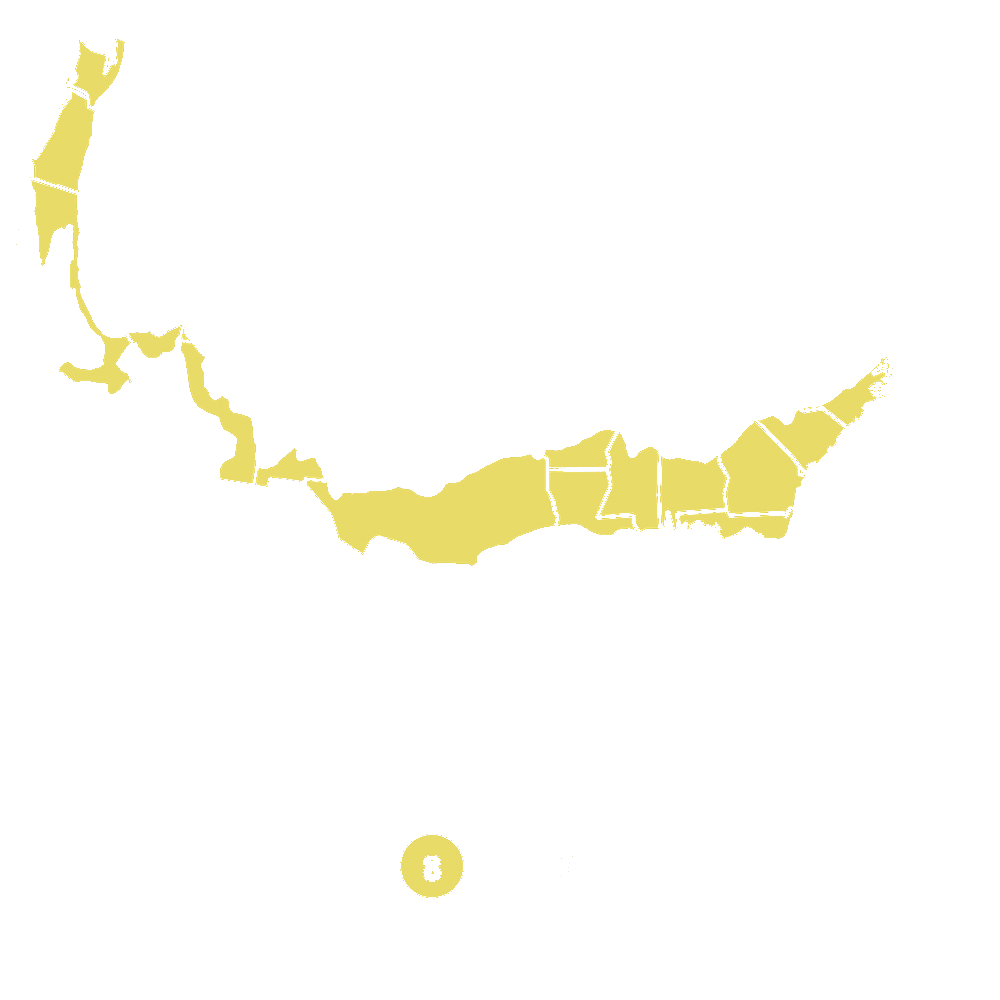
Pollination Info
Bur Oak Tree (Quercus macrocarpa): Pollination Information
The Bur Oak tree (Quercus macrocarpa) is a species of oak native to North America. It is a deciduous tree that typically grows in a variety of habitats, including prairies, savannas, and forests. Bur Oak trees are known for their distinctive acorns, which are an important food source for a wide range of wildlife.
Pollination
Bur Oak trees are wind-pollinated, meaning that they rely on the wind to carry pollen from the male flowers (catkins) to the female flowers (tiny red stigmas). The male catkins release pollen into the air, where it is carried by the wind to the female flowers. Once the pollen reaches the female flowers, it fertilizes the ovules, leading to the formation of acorns.
Because Bur Oak trees are wind-pollinated, they do not rely on bees or other insects for pollination. This means that they are less affected by factors such as the decline of bee populations. However, wind-pollination can also lead to lower rates of pollination compared to insect-pollinated trees.
Overall, Bur Oak trees play an important role in their ecosystem by providing food and habitat for wildlife. Their unique pollination process ensures the continued production of acorns, which are essential for the survival of many species.
FAQ
Bur Oak Tree (Quercus macrocarpa) FAQ
What is a Bur Oak Tree?
A Bur Oak Tree, also known as Quercus macrocarpa, is a large deciduous tree native to North America. It is characterized by its distinctive rough bark and large acorns.
How tall can a Bur Oak Tree grow?
Bur Oak Trees can grow up to 100 feet tall, with a spread of 80 feet or more. They are known for their broad, spreading crowns and sturdy branches.
What are the ideal growing conditions for a Bur Oak Tree?
Bur Oak Trees thrive in full sun and well-drained soil. They are tolerant of a variety of soil types, including clay, loam, and sandy soils. They are also drought-tolerant once established.
How fast does a Bur Oak Tree grow?
Bur Oak Trees are known to have a slow to moderate growth rate, typically adding 12 to 24 inches of height per year.
When do Bur Oak Trees produce acorns?
Bur Oak Trees typically produce acorns every 2-3 years, starting at around 20 years of age. The acorns are large and valuable food sources for wildlife.
Are Bur Oak Trees susceptible to any diseases or pests?
While Bur Oak Trees are relatively resistant to diseases and pests, they can be susceptible to oak wilt, powdery mildew, and borers. Proper care and maintenance can help prevent these issues.
Can Bur Oak Trees be grown in urban settings?
Yes, Bur Oak Trees are tolerant of urban conditions, including pollution and compacted soil. They make excellent shade trees for parks, streets, and yards.
Planting & Care
Planting & Care for Bur Oak Tree (Quercus macrocarpa)
The Bur Oak Tree, also known as Quercus macrocarpa, is a large, slow-growing tree that is native to North America. Here are some tips for planting and caring for a Bur Oak Tree:
Planting:
- Choose a sunny location with well-drained soil for planting the Bur Oak Tree.
- Dig a hole that is slightly larger than the root ball of the tree.
- Place the tree in the hole, making sure that the top of the root ball is level with the ground.
- Fill in the hole with soil and water the tree thoroughly.
Care:
- Water the Bur Oak Tree regularly, especially during the first few years after planting.
- Mulch around the base of the tree to help retain moisture and suppress weeds.
- Prune the tree as needed to maintain its shape and remove any dead or damaged branches.
- Fertilize the tree in the spring with a slow-release fertilizer designed for trees.
- Monitor the tree for pests and diseases, and treat as necessary.
With proper care, a Bur Oak Tree can provide shade, beauty, and wildlife habitat for many years to come.
Check Out These Verified Customer Reviews:
Customer Reviews
4.5 out of 5 based on 8 reviews
Thank you! Your review has been submitted.
The Bur Oak Tree I received was absolutely stunning, with a healthy appearance and vibrant green leaves. The tree arrived in perfect condition and is thriving in my garden. The customer service was excellent, providing helpful tips for care.
Overall great experience purchasing from Bur Oak Tree, will buy again.
Impressed with the quality of the Bur Oak Tree, looks amazing in my yard.
Item has been added to your cart.

